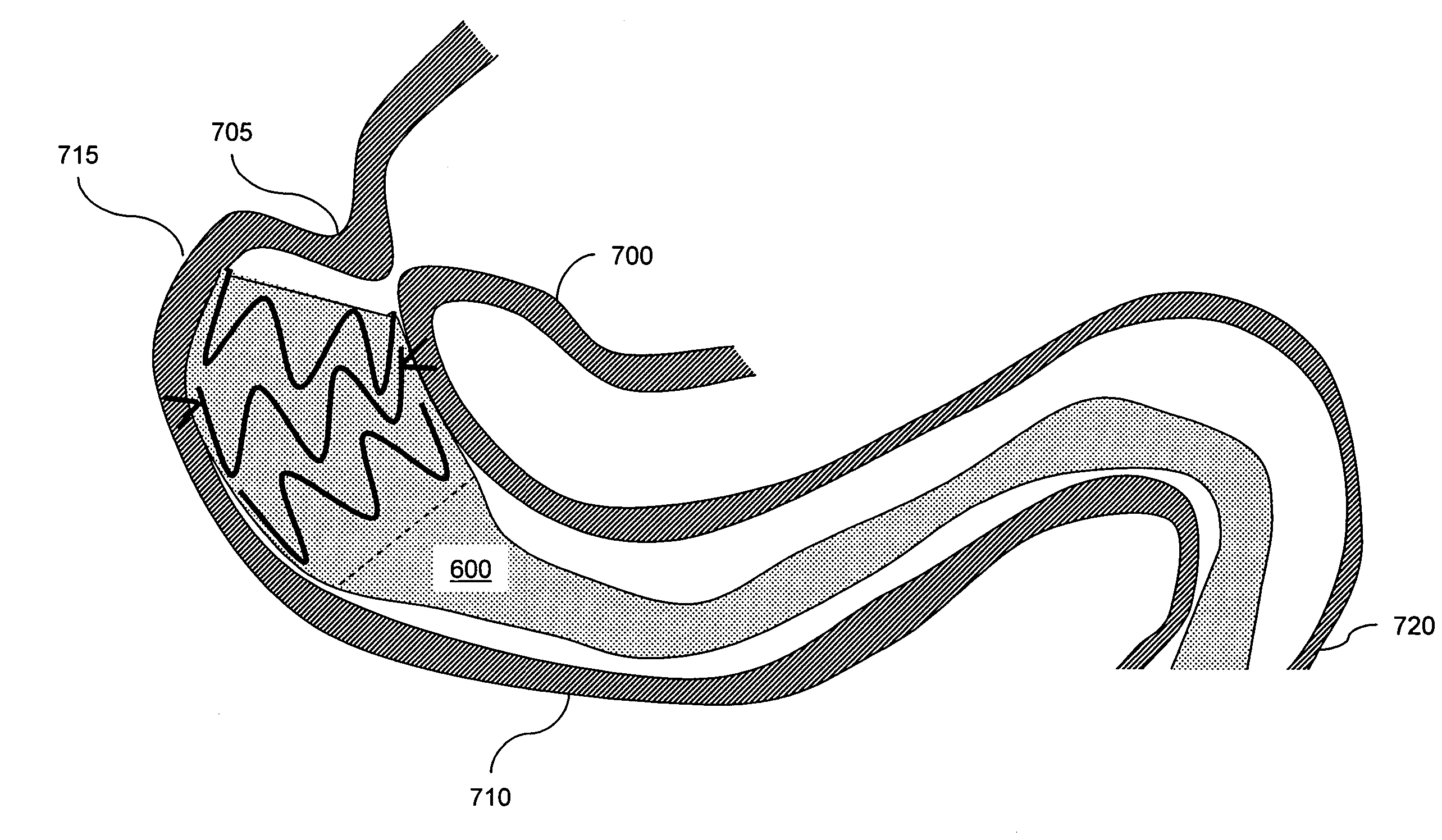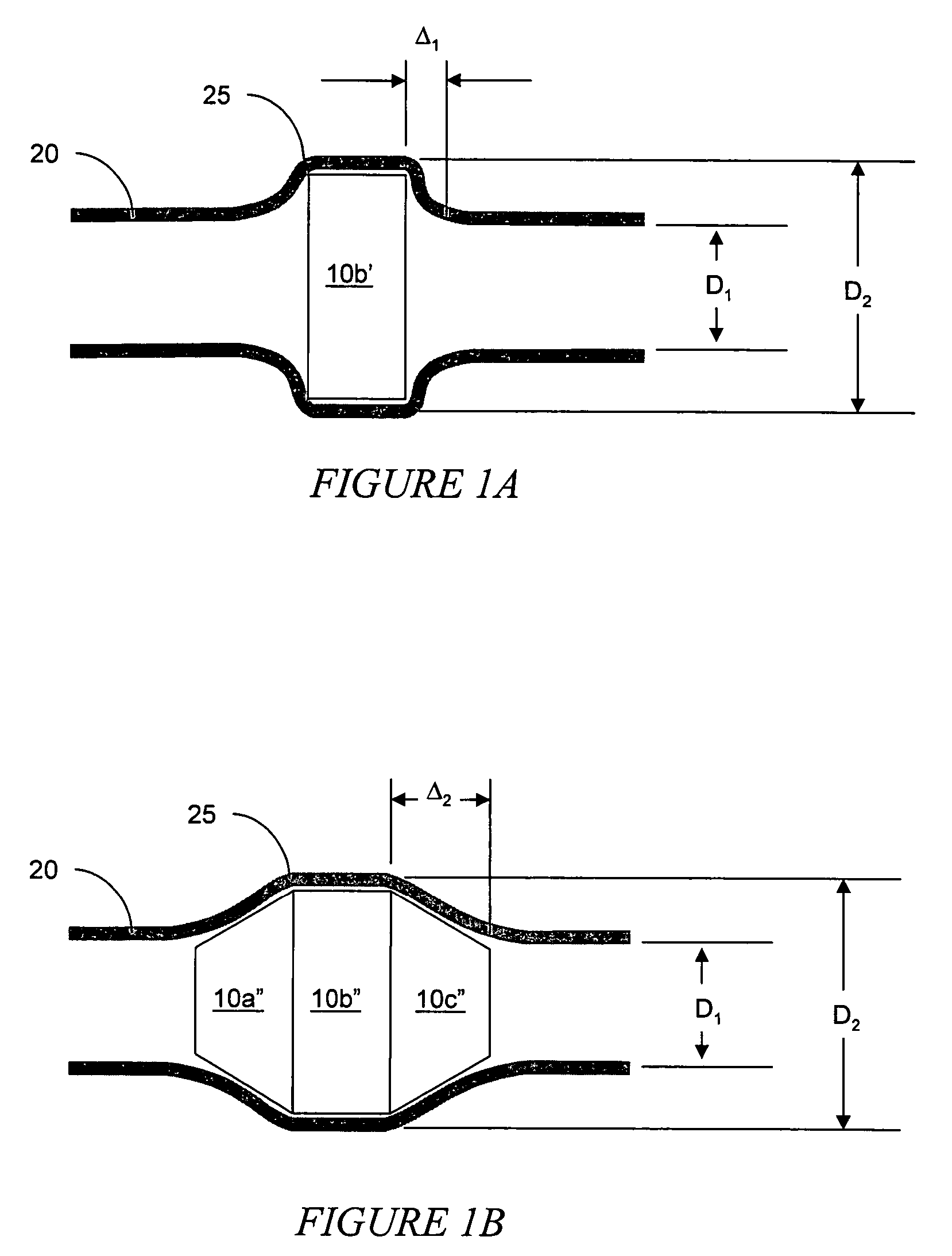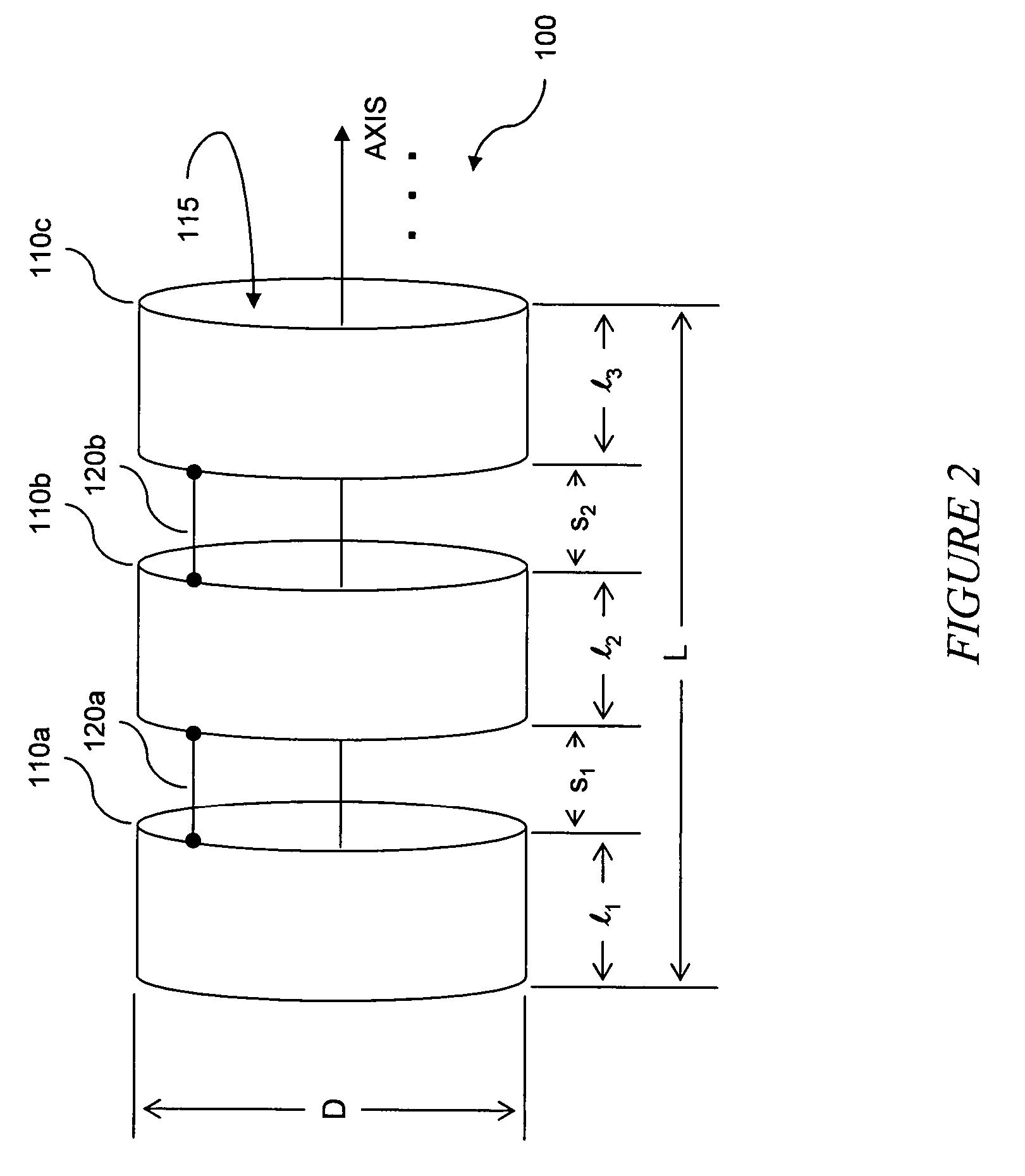Atraumatic gastrointestinal anchor
a gastrointestinal and gastrointestinal technology, applied in the field of atraumatic gastrointestinal anchors, can solve the problems of increasing the risk of anchor injury, affecting and affecting the healing effect of the anchor, so as to promote radial expansion and contraction of the device, and the thickness of the tube can be altered
- Summary
- Abstract
- Description
- Claims
- Application Information
AI Technical Summary
Benefits of technology
Problems solved by technology
Method used
Image
Examples
Embodiment Construction
[0032]A description of preferred embodiments of the invention follows.
[0033]An anchor is adapted for anchoring within a natural bodily lumen while allowing continued functionality of the lumen and providing minimal trauma to the surrounding anatomy. Such an anchor provides a securing force acting upon the surrounding anatomy to hold the anchor fast, even in the presence of anticipated biological forces. For example, the securing force would hold a gastrointestinal anchor in position even in the presence of peristalsis. Anchoring against such forces, however, may require substantial securing force that could otherwise damage the surrounding tissue.
[0034]A cross-section of a natural bodily lumen 20 including an anchor 10b′ is illustrated in FIG. 1A. Generally, the lumen defines a natural diameter, D1, that may vary over time. The anchor provides a radially-outward securing force directed against the luminal walls. Depending upon the structure of the anchor 10b′ and the compliance of t...
PUM
 Login to View More
Login to View More Abstract
Description
Claims
Application Information
 Login to View More
Login to View More - R&D
- Intellectual Property
- Life Sciences
- Materials
- Tech Scout
- Unparalleled Data Quality
- Higher Quality Content
- 60% Fewer Hallucinations
Browse by: Latest US Patents, China's latest patents, Technical Efficacy Thesaurus, Application Domain, Technology Topic, Popular Technical Reports.
© 2025 PatSnap. All rights reserved.Legal|Privacy policy|Modern Slavery Act Transparency Statement|Sitemap|About US| Contact US: help@patsnap.com



